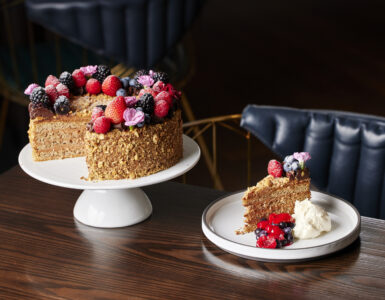Here are six steps to learn how to drink whisky and help you find the right drop that makes your tastebuds sing.
To the uninitiated, whisky might seem like the domain of musty older men wearing tweed jackets. To converts, however, whisky can be perfection in a glass – offering hints of smoke or peat, syrup or spice. If the charms of whisky are lost on you, never fear; there is sure to be one out there that will win you over, we promise.
Here are six steps to help you learn to love whisky.
1. Know what’s in a name
Do you know your whiskey from your whisky? What about bourbon, rye or Scotch? If you’re sipping the stuff in Scotland, Japan, Australia and Canada, you’re drinking whisky (no ‘e’). But if you’re propped up at a bar in the US, Ireland or Mexico, it’s whiskey with the ‘e’. Scotch is whisky made in Scotland, but not all Scotch is single malt nor peated whisky. Bourbon is a whiskey made with corn grain hailing from the US (mostly Kentucky), but to confuse matters Tennessee makes a bourbon variety called ‘Tennessee whiskey’. Rye whiskey is made from rye grain, while moonshine is unaged US whiskey. If all these names for the honey-hued spirit have your head spinning, don’t worry – basically, they’re all worth a try.
Want to find out which country produces the best whisky? Read our guide to taking a whisky world tour.

2. Learn what’s in the barrel
At its most basic, whisky is a mix of grain, yeast and water that is fermented, distilled, then matured in wood barrels, typically oak. Barley, corn, rye and wheat are the most popular grains – sometimes solo, often blended – and each grain impacts the aroma and taste of the final product. Corn often results in sweeter, easy-drinking whiskies (especially bourbon); rye is known for spicey notes; while barley gives the roasted flavours of classic single malts.
The size and age of the barrel they’re aged in also matters. New, charred oak barrels (popular in the US) give off vanilla notes, while many distillers (especially in Scotland) like the subtle flavours of old sherry and bourbon barrels. It sounds like a lot of technical talk, but every step of the process translates in your glass.

3. Try a single malt
A single malt whisky is the domain of the old-school whisky snob – with a Scotch single malt the holy grail. Single malt Scotch is produced and bottled in a single distillery using malted barley (but other grains can feature outside Scotland). A distiller can balance whisky of different ages, but only from the same distillery. For Scotch, the bottle must show the age of the youngest whisky in the mix (no matter how old the base whisky is). The beauty (and the risk) of single malt is that it’s harder to maintain consistency; that perfect balance of barrels is diabolical to reproduce. That’s where blends come in.

4. Seek out a blend
Blending is just that – a blend of whiskies from multiple distilleries. Although bias towards single malt lingers, blending demands an expert touch and can produce finely honed whiskies. Scotland may be synonymous with single malts (despite producing many fine blends), but Japan is big on the blend.
If you ask House of Suntory’s Australian ambassador Tom Scott, blending is just like cooking: “It all comes down to the quality of the ingredients. To create a perfect blend you need to start with good-quality whisky.” Suntory’s master blenders combine whiskies from three acclaimed distilleries: Yamazaki, Hakushu and Chita.
“The harmony of blending these ingredients is an artform and one that House of Suntory has become a master of,” Tom says. “We use techniques to deliver ‘creative harmony’ or ‘dynamic balance’ and produce award-winning Japanese blended whiskies such as Hibiki and Suntory Whisky Toki.”

5. Mix it up
There are many ways to enjoy your whisky, from neat (served straight up), with water (as little as a drop or two) or on the rocks (with ice, but not enough to dull the flavour). Neat lets you experience the whisky in all its glory, but a touch of water can soften the alcohol and enhance flavours (as will a giant ice cube, slowly melting). How to serve whisky comes down to individual preference – and that’s before you wade into the tasty world of whisky cocktails – however a good bartender can suggest what works for a particular whisky. Just please, don’t reach for the cola if you’re drinking a world-class glass of whisky.

6. Taste widely
The only way to find out what you like is to get tasting, according to master distiller Dave Withers of Sydney’s Archie Rose. “My top tip would be to go to a few tastings and try a wide variety of whiskies,” he says. “Drinking broadly will no doubt allow you to develop an idea of what styles you like and provide you with inspiration for brands that create whiskies to suit your preference.”
Head into The Star Gold Coast and Treasury Brisbane and come and sample whisky any way you please – we bet you’ll fall in love with this tipple.















